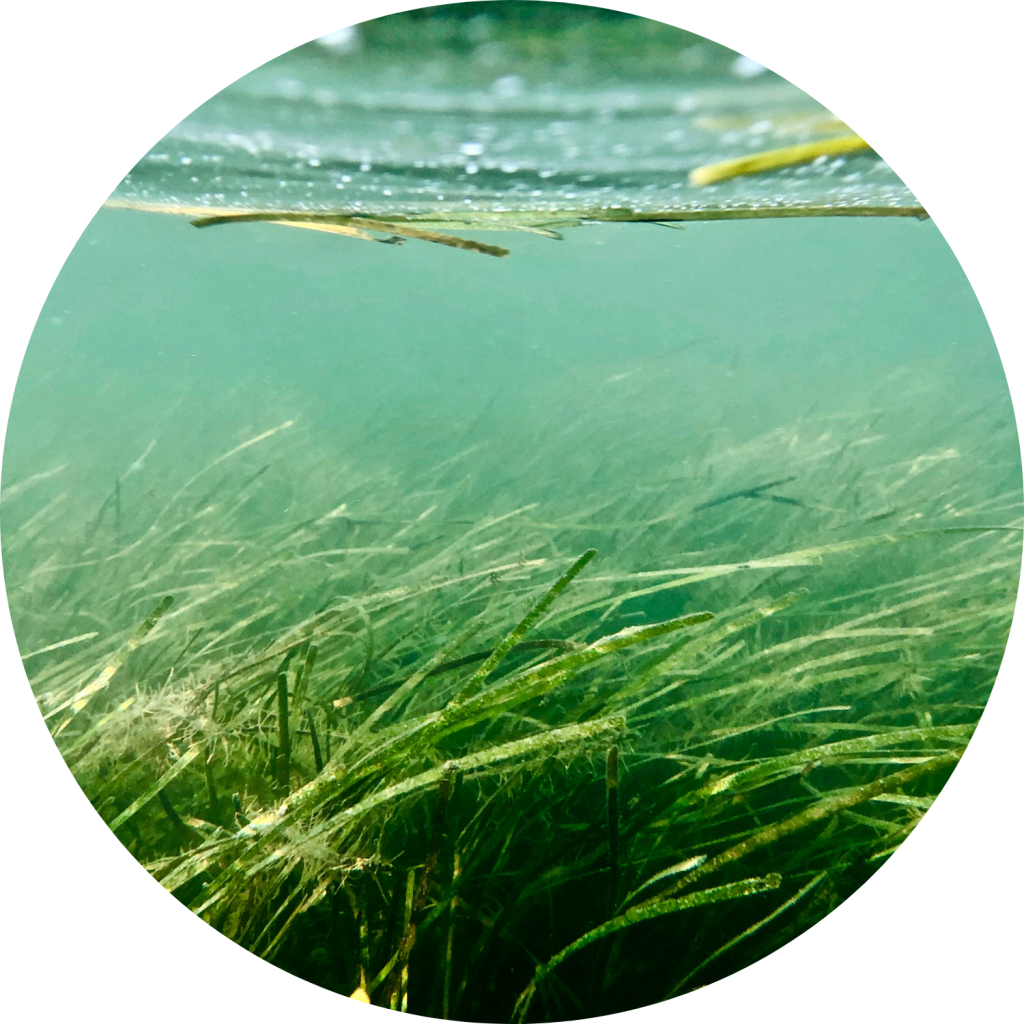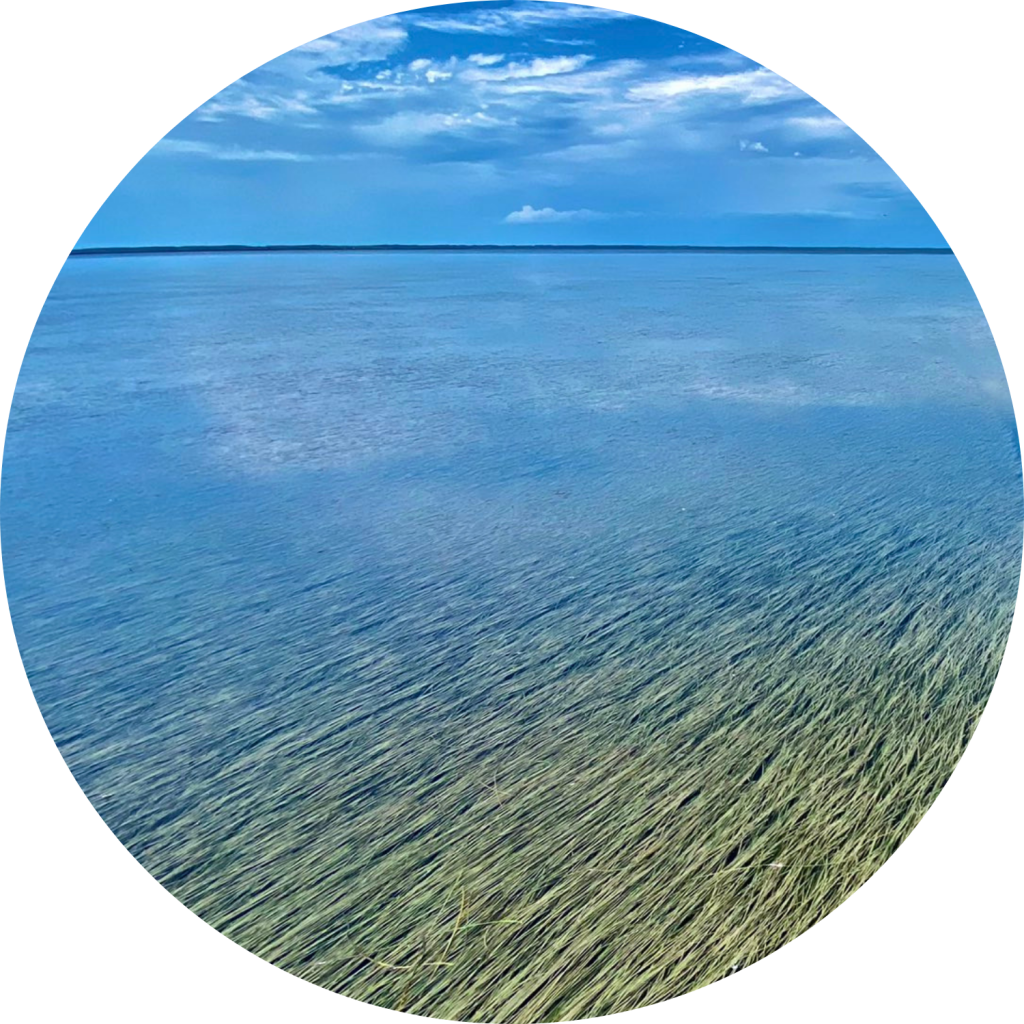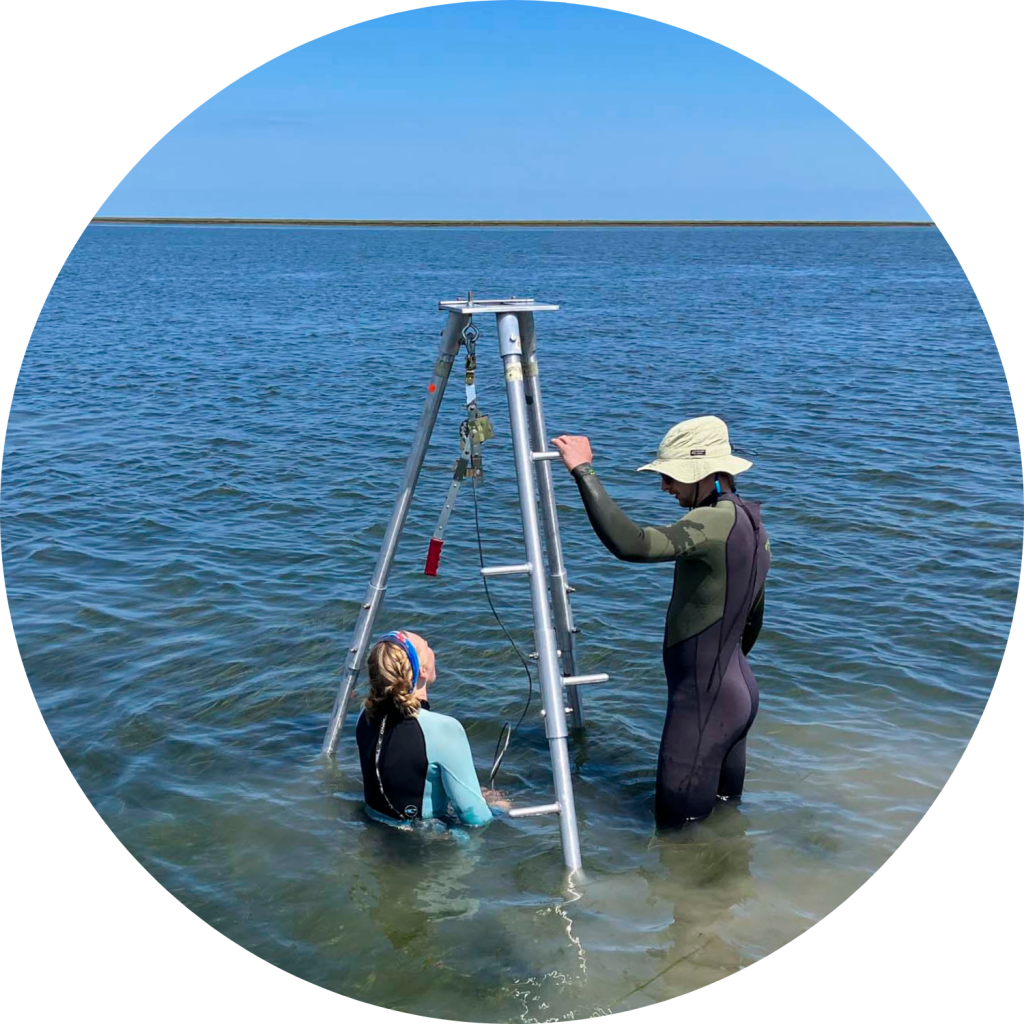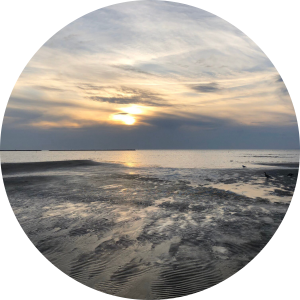Restoration and Resilience
Loss of seagrass ecosystems is accelerating globally, making large-scale restoration efforts more important than ever. Successful restoration and the return of ecosystem services provided by these habitats give reasons to be optimistic. Our research focuses on the largest seagrass restoration in the world: a 36 km2 restoration of eelgrass (Zostera marina) in the Virginia Coast Reserve coastal bays. Long-term data collected over the last 20 years gives us a unique opportunity to study both the mechanisms and feedbacks of restoration and the resilience of seagrass meadows, especially to marine heatwaves that are increasingly in frequency and duration.
Key Findings

Positive feedbacks enhance ecosystem state change
• Trajectories of seagrass restoration are non-linear (McGlathery et al. 2012)
• A positive feedback of the seagrass canopy on sediment stabilization improves light availability and enhances habitat suitability for seagrass growth (Carr et al. 2010, 2012a,b, 2016; Hansen & Reidenbach 2012, 2013; Reidenbach & Timmerman 2019)
• Restoration by seeds promotes genetic diversity and population structure, especially where barriers to natural recruitment exist (Reynolds et al. 2012a,b, 2013)

Restoration reinstates ecosystem services
• Key ecosystem services are reinstated within a decade of restoration by seeding and are enhanced by genetic diversity (McGlathery et al. 2012, Reynolds et al. 2012, Orth et al. in review)
• Primary productivity measured by aquatic eddy covariance is enhanced 10-25 fold in seagrass meadows compared to unvegetated sediments (Hume et al. 2011, Rheuban et al. 2014a,b)
• Seagrass restoration reestablishes the coastal nitrogen filter through enhanced nitrogen burial (10x) and denitrification (4x) (Aoki & McGlathery 2017, 2018, Aoki et al. 2019)
• Carbon sequestration in plant biomass and burial in sediments at the meadow scale is on par with natural meadows (Greiner et al. 2013, Oreska et al. 2017a, Berger et al. 2020)

Resilience to ocean warming varies both spatially and temporally
• Seagrass meadows recovered in some regions within 3 years from a heatwave-induced die-off
• High temperatures caused a shift in trophic status from balanced to net heterotrophy during the die-off to net autotrophy as the meadow recovered (Berger et al. 2020)
• Water depth modulates rates of recovery following a marine heatwave (Aoki et al. 2020)
• Aquatic eddy covariance measurements suggest seagrass will not be ‘winners’ in more acidic warmer oceans (Berg et al. 2019)
